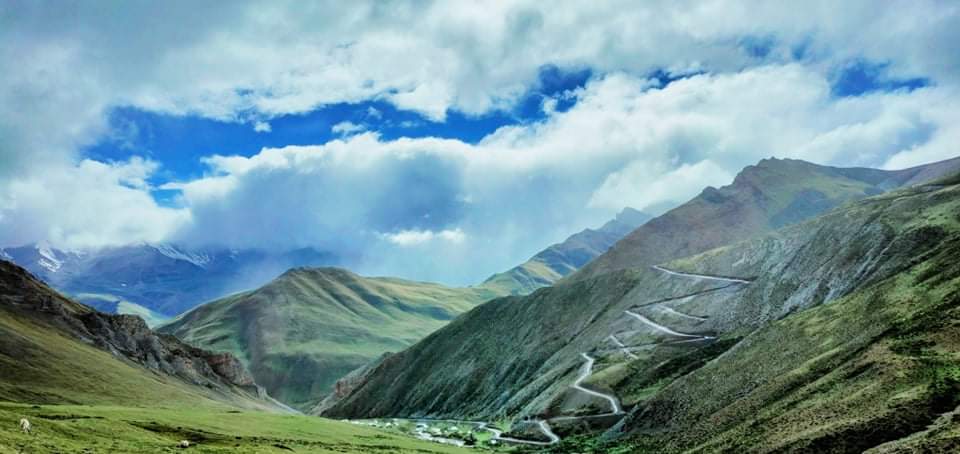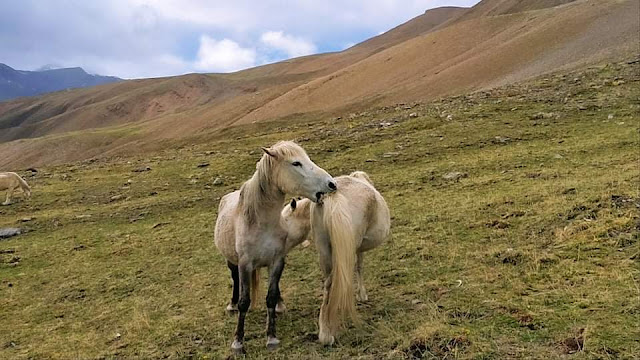Trekking in Dolpa-The Hidden Treasure Of Nepal
Introduction
Pic credit Goes to : Shree Krishna Dangol
Dolpa is one of the most interesting trekking destinations of Nepal for many reasons. First of all, with a ratio 7,889 sq. kilometers, it is the largest district of Nepal, and yet one of the most sparsely populated. Its topography is very interesting. It contains the deepest lake of Nepal, Lake Phoksundo, which also happens to be the deepest lake of high altitude in the world. Dolpa is one of the few Nepali districts that is behind the Himalayan mountains, due to which it gets very little rain. Hence, most of the hills are bare with little vegetation. Harsh weather combined with high hills makes this area one of the most inhospitable in Nepal, and yet the barren and majestic hills lend it a rare beauty that is absolutely mesmerizing.
Due to the harsh living conditions, few people live or travel in these areas. As a result, the people of Dolpa are part of a very isolated culture found in specific pockets of northern Nepal. This is a land where life still revolves around horses, mules, and yaks, people still wear traditional attire and jewelry, waters are still divided on the basis of a dice game, and the remains of the dead are given to wild vultures. Even today, much of Dolpa is restricted area for tourists, which contributed to the preservation of unique culture of Dolpa.
Some of the attractions of this route are: Dho Tarap, a human settlement at the highest altitude in the world, Shey Gumba, religiously the most important Gumba in Nepal, and lake Phoksundo, the deepest lake of high altitude in the world.
Flora and Fauna
Upper Dolpa region is full of rare herbs and wild animals. Lucky tourists can sight blue sheep, ghoral, and even cheetahs, and many other species of wild animals. Also, the forests of Upper Dolpo are home to rare plants like Yarsagumba, Jatamasi, Panchaunle, Chimailo, and many others.
Yarsagumba
Upper Dolpa is one of the few remaining sources of Yarsa Gumba, an exotic half plant, half animal that is considered a powerful aphrodisiac. Every year, in May June, the Shey Phoksundo National Park opens its doors to the seekers of Yarsagumba. Local villagers travel in droves to great heights to seek this elusive plant that is found only in high altitudes under specific weather conditions. At a diminutive six inches, the Yarsagumba is hard to spot on ground for anyone but local experts. Even the locals have to endure tough hardships of high altitude, cold, and harsh topography to reap the Yarsagumba in its prime condition. They then sell it to local dealers at up to Rs. 1,200 per piece. The economy of Dolpa leans heavily on Yarsagumba, called simply "the insect" by locals, and "Himalayan Viagra" by its enthusiasts. In July- August, droves of local traders can be found collecting Yarsagumba from villagers, and taking it over to China or Kathmandu for sale. At the end of the chain, Yarsagumba sells for more than Rs. 5,000 per piece in retail.
Trekking in Dolpa
The months of March to September are good for embarking on this trek. After September, it starts snowing heavily, and trekking is possible only with heavy duty equipment. From November it is completely impassable. The best time is from March to May, as it may rain in June and July.
Communication
Travelers may lose communication at many stretches of the journey. Satellite phones work in any place, but are expensive. Phone networks which are popular in other parts of the country do not work well here. Ncell works in big towns like Dunai and Khalanga, but not at smaller villager. Namaste is only available at Khalanga and Dunal. Hello Nepal is the most popular network, and works in some of the larger settlements like Saldang, and Bhijer. Hello Nepal towers are being constructed, Tinje, Dho Tarap, Chharka, Kagkot, Mukat, and a few other places. Sky Nepal is the second most popular phone network.
High Altitude
Any height more than 3,000 meters above sea level is considered to be high altitude. During Dolpa trek, travelers frequently go above 3,000 meters and there are several passes of more than 5,000 meters. Hence, travelers should be well prepared for altitude sickness. Though anything abnormal that happens above 3,000 meters is considered altitude sickness, some of the common symptoms are listed below.
• Headache
• Difficulty in breathing Disinterest in food
• Vomiting
• Difficulty in walking
• Dizziness
•Sleepiness
• Tiredness
•Anger/Irritation
• Body aches
•Slurred Speech
Travelers should carry enough water, food, and medicines to alleviate altitude sickness.




Post a Comment